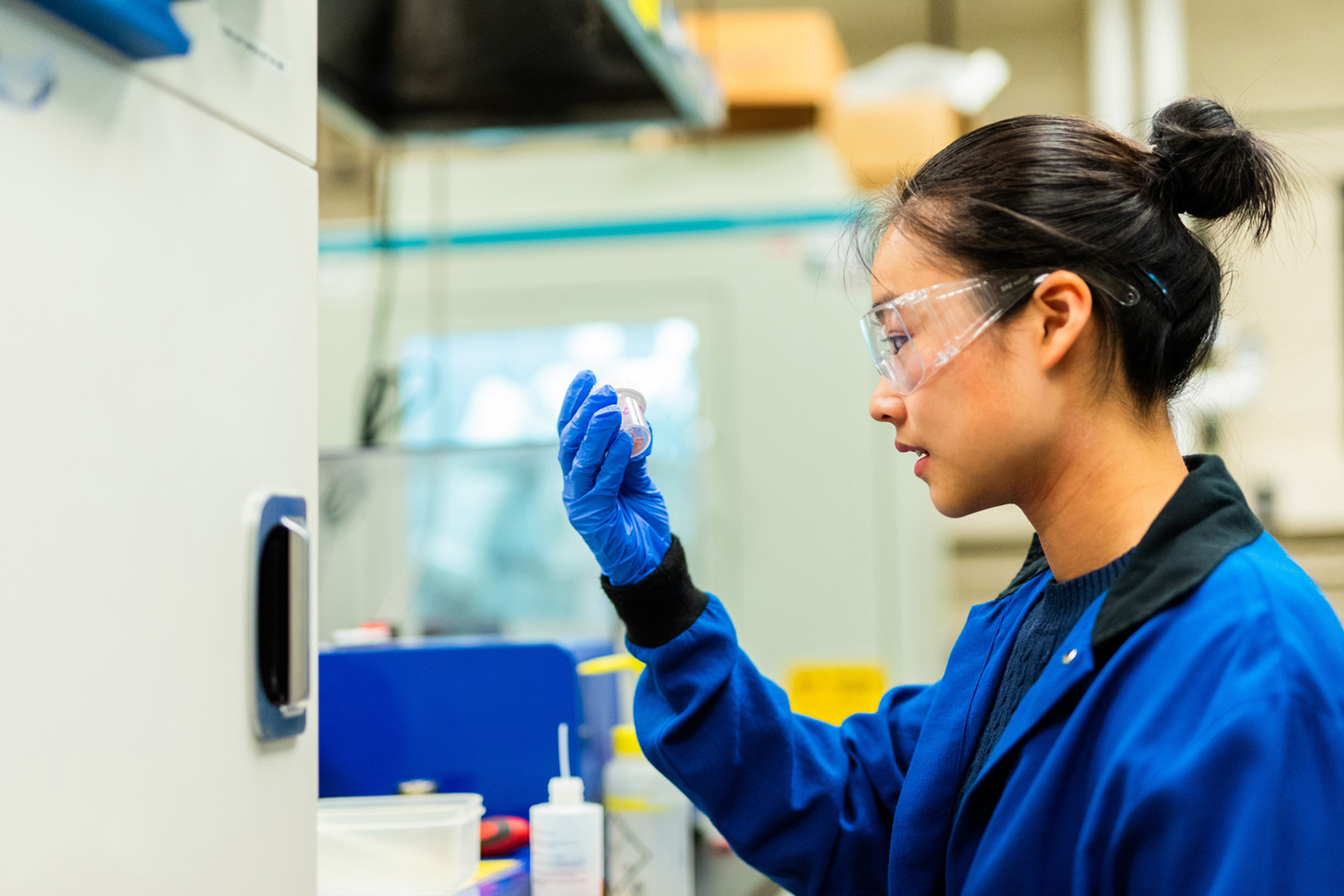Combining Tech and Finance to Power Clean Energy
-
-
MIT Spectrum
Filed Under
Recommended

As a public high school student in Northern California, Shu Yang Zhang ’24 learned about MIT from an enthusiastic chemistry teacher and soon made it her top college choice.
Zhang reflects that she was drawn to the Institute by the promise of exciting research and brilliant people, but also by the emphasis on collaboration. “I have definitely not been disappointed,” she says, citing the MIT community’s “collective desire to learn and do something meaningful with the knowledge you have.”
Zhang, a recipient of the Robert A. Laudise Memorial Fund scholarship, hopes to help society make great strides toward sustainability and clean energy. Recognizing a need for financial as well as technical expertise, she double majored in materials science and engineering and finance. Her curriculum included coursework at the MIT Sloan School of Management.
To enable next-generation energy sources, she explains, it is critical to have both scientific knowledge and a firm understanding of the numbers involved. “Practical matters, like ‘What kind of financing do I need to actually create this manufacturing line?’” Being a double major, she says, gave her “this other viewpoint into the up-and-coming materials in the sustainability and energy space."
Even with great technology, if we can’t get it into the hands of everyday people, it’s not having much impact.
Zhang applied this dual approach to choosing summer internships, seeking experience in both engineering and finance to help identify her ideal career choice. The summer after her first year at MIT, she interned at a hedge fund assisting with fund accounting, tax, and valuation. “From that I realized that I didn’t want to be doing just the finance side,” she says. “I was missing the stimulation from the science, the theoretical approach, all the things I love.”
The following summer, she worked in field engineering at an electronic components supplier for electric vehicle (EV) projects. “It was a little bit of engineering because you do have to understand what this battery system looks like for a car, and it was also a lot of business: thinking about sales and strategy and how to approach customers in these different fields.”
While she enjoyed working at the intersection of her two majors, this role “wasn’t quite technical enough for me,” she explains.
As an undergraduate researcher for Yet-Ming Chiang ’80, ScD ’85, the Kyocera Professor of Ceramics in the Department of Materials Science and Engineering, beginning in her junior year, Zhang developed a deep interest in lithium-ion and lithium metal batteries. In the summer of 2023 she put that experience to good use as a cell engineering intern at Tesla on its lithium extraction projects in Nevada. “Tesla was my dream company to work for,” she says. “I got to think more deeply about the critical materials and minerals that go into EV batteries and the battery materials I’ve been developing at MIT.”
Her experience in Chiang’s group, combined with earlier work researching sustainable cement under the direction of Associate Dean of Engineering Elsa Olivetti PhD ’07, the Jerry McAfee Professor in Engineering and codirector of the MIT Climate and Sustainability Consortium, contributed to Zhang’s enthusiasm for materials science theory and convinced her that graduate school should be next. “I just feel like I’m not done learning,” she says. Eventually, she envisions working in the clean energy industry, “working on large-scale projects that would get new battery materials or clean energy infrastructure into the hands of everyday people.”
Impact, she says, is her driving force. “Even with great technology, if we can’t get it into the hands of everyday people, it’s not having much impact.”
Zhang hopes her career will honor the legacy of Robert Laudise PhD ’56, since the scholarship established in his name has made her undergraduate education possible. “Dr. Laudise dedicated his life to advancing the field of crystallography and materials science,” she says. “Being funded by this very well-established materials scientist—as a materials science student, that connection was really meaningful to me. The funding has been pivotal, and I really appreciate that scholarships from generous donors lower the barriers to education.”
“One of my favorite parts of being in the materials science community,” Zhang remarks, “is working as a teaching assistant, helping younger materials scientists develop the interest and appreciation for materials. That’s my way of making sure this funding is put to good use and helping the up-and-coming generation.”
This story was originally published in the spring 2024 issue of MIT Spectrum.
Photo: Sarah Bastille Photography







